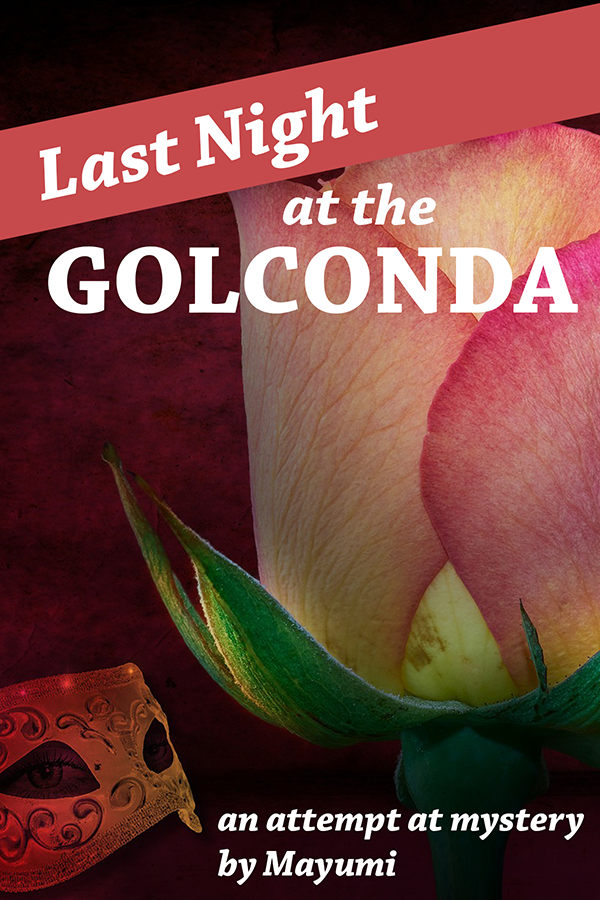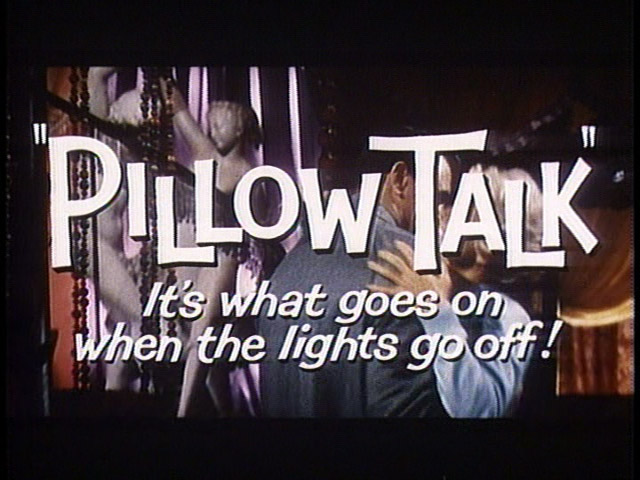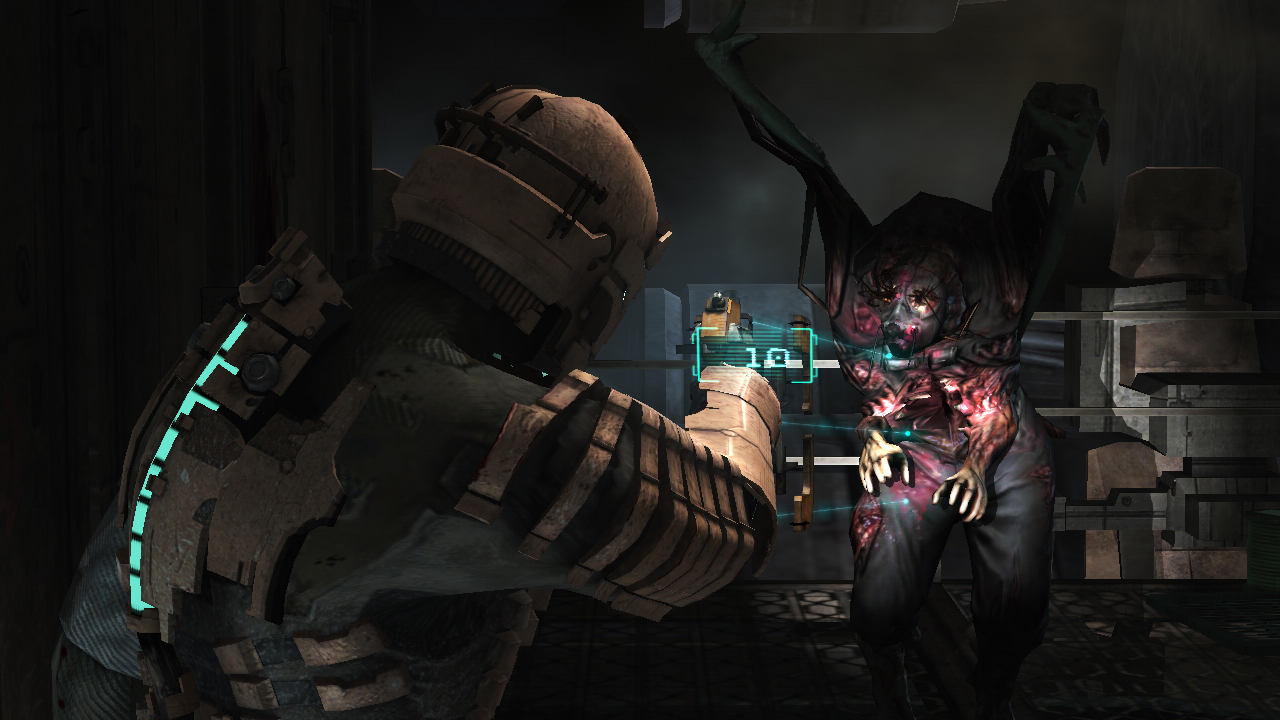by Mayumi-H | May 24, 2019 | Excerpts, Writing Projects
The Eve and Alan characters are new to me. I’m still feeling my way around them and their post-WWII world. I already like them, though, and they’re already forming a story for themselves. Love (and sex) play a part because that’s how they first came to my mind. A few kind readers took a chance on my initial foray into their world, in the vignette “Apples and Eve”, available by request if you so comment.
I’ve never written this genre before. These characters are speaking to me, though. Who knows? Maybe, if the feedback is good, I’ll try my hand at more of this particular story. At any rate, if you decide to read this little scene, I’d be grateful if you share your thoughts. Click the link below to read the PDF; it runs ~1700 words, or 6 pages double-spaced.
Warning: This story contains description of mature interactions between adults.

Last-Night-at-the-Golconda
by Mayumi-H | Jan 7, 2013 | Excerpts, Fearless
(Or, visualisation, if it please you, Beth. ;))
I think writers should be as visual as traditional artists. Perhaps more so, because we need to provide description for a reader, without the benefit of a comic panel or moving image. But, dwelling on description overlong can become tedious for a reader, and that we never want.
“Good morning,” he replied, coming to a slow stop in front of her. He propped his board beside him, shielding her from the bright sun; it didn’t make her any less pretty.
“Ah…Amber, yeah?” he said, feigning blase non-involvement.
She nodded. “And you’re…” She paused a moment. “Fearless?”
He snorted. “Close enough. Ross.”
“Right,” she said. Though from her smile, he guessed she hadn’t needed the reminder, either.
He raised his brow at her. “You need help with something?”
“You said I should stop by,” she reminded him, as she glanced up at the sign of the shop, with its graffiti-style lettering. Looking back to him, she smiled again. “So, here I am.”
“Here you are,” he echoed, as he felt himself break into a smile, too.
That’s the only time the shop sign is mentioned, but I still came up with a design:

The Fearless shop logo
Mostly, I did it because I like playing around with graffiti. But, I also think it’s important for a writer to have a firm vision of the world in which their characters live. The more we know – either in our heads or on the page – the less we need to explain to the reader: the details usually invariably find their way into the story on their own.
I design (or, at least, I keep detailed notes for) every location of any import in my stories, from Ross’s living loft above the shop, to Amber’s hospital room, to the Truro flat. I did the same for a Japanese apaato and a country ryokan, a starfaring tramp tanker and a soldier’s little love nest. Because understanding where your characters are will help everyone understand where they go, how, and why (we call that “blocking” in theatre-speak).
How do you design your locations in your stories?
by Mayumi-H | Nov 26, 2012 | Excerpts, Fearless, Process
Breathless, sweaty, and dizzy of a sudden, Ross tumbled to the bed beside her, one arm still draped loosely around her. They would need to clean up and wash before bed, but, for the moment, he just wanted to lie with her in the drowsy quiet. So, settling his head next to hers, he blinked, and swallowed, and asked:
“Can we cuddle a bit?”
No mincing words, here: I think sex is an important part of any adult, loving relationship. It’s fun to write, too…though what’s more interesting is examining what happens around the main act. Pillow talk in these situations can offer a unique perspective on your character.

Trailer title from the 1959 movie; public domain image.
Lovers (and this includes men, here) are often much more honest with each other when they’re naked and relaxed, coming down from a sexual high. Just something about that situation, I guess, that opens people up. 😉
If you’re so inclined to write a sex scene, I’d suggest at least considering that opportunity of after-sex pillow talk, to broach some of your more sensitive topics. Perhaps your woman has body image issues, or your man has trouble with intimacy. You can potentially use this time to explore those, in a natural, conversational way.
Because honest communication is what truly makes sex sexy.
If you write sex, on what part do you like to focus: the buildup, the climax, or the denouement? If your story doesn’t include the convention of sex, how do you approach sensitive relationship subjects?
by Mayumi-H | Aug 13, 2012 | Excerpts, Fearless, Persona 4 Fan Fiction, Process
As much as I enjoy delving into the heady depths of a good romance, one of my favorite parts of examining relationships is the dance of early affection between two characters. While not necessarily innocent (especially from a player’s point of view), it’s often full of a plain and refreshing simplicity:
![320px-Iris_'Dancer's_Veil' By A. Barra (Own work) [GFDL (http://www.gnu.org/copyleft/fdl.html) or CC-BY-SA-3.0-2.5-2.0-1.0 (http://creativecommons.org/licenses/by-sa/3.0)], via Wikimedia Commons](https://mayumi.amorphous.press/wp-content/uploads/sites/4/2012/08/320px-iris_dancers_veil.jpg?w=300)
They simply walked and talked: about the streets and shops, at first, but – as the steps wore on – about less random and more personal things. Such as the kinds of music they liked (she enjoyed an eclectic mix of dance hall, pop, and classical, while he favoured straight-up guitar rock, funk, and electronica), to what sorts of television programmes they preferred (she swooned over period masterpieces with the same affection he held for episodic science fiction, though they were both fans of detective dramas of any sort), to what foods they liked to eat (he was a lenient vegetarian, whereas she adored rare steak…but both of them found tandoori takeaway too scrumptious to ever pass up).
All along the way, Ross found himself becoming more and more curious about discovering what made pretty, perky, adorably sexy Amber Baelin tick, that he almost forgot how easily she could set his nerves on fire. Until they approached the heavy wooden door of the narrow two-storey row house she called home, that is, because it meant their time together was over.
I’ve occasionally spent a good deal of time with two would-be or could-be lovers breaking through the initial barriers of mutual ignorance. But, for this story, I felt the time would be better spent on the more pressing conflicts of self-doubt, past heartaches, and unexpected physical limitations. Still, it’s always fun to imagine how two characters can come together.
Someone might say that this is too much outright “telling” for a story. As for me, I like to think these smaller details are just icing on a bigger cake I’m trying to “show.”
How do you approach the blossoming of love in your stories? Or, do you think it’s just a bunch of rubbish, and bring on the bodycount?
by Mayumi-H | Jul 30, 2012 | Excerpts, Fearless, Process
A friend of mine asked to read my latest project, which happens to be Fearless. I don’t usually share my work with people I trust so early in the game, but I offered him the first two (draft) chapters, mostly just to shut him up.
It didn’t.
What I got back was an earful. He made some good points, but this had to be my favorite critique: The best friend is more likable than the hero. To quote: “Your hero’s a jerk.”
That one actually made me grin. Because yes, he is. But, that’s a big part of the story.
One of the things I love about my main characters is that they’re flawed. Some more than others, of course, but I try to help them all grow. That’s the beautiful thing about heroes and heroines. They’re like you and me (sometimes scarily so), but, over the course of the story, they push themselves to be better people. They don’t always get what they want, but they’re stronger men and women for the effort.
Which is why it’s so much fun to write them as jerks in the beginning:
Ross felt a grin creep to his face. Then he raised his free arm and called out, “Mornin’, Beth!”
Neville clicked his tongue, muttering, “Grow up.”
Ross ignored him, swinging his board up as he approached both fruit and filly. He bent his head, offering the Crispins’ youngest daughter a leering smile. “You look as scrumptious as those apples!” he told her.
Beth laughed and blushed bright red under her kerchief. “Thank you,” she said, her voice mostly squeal.
It took some effort for Ross to keep his smile in place; hopefully, that voice would one day mature as nicely as her tits had already done. Still, he wasn’t interested in her, just the apples, so he offered her a charming flare of his nostrils and asked, “Think you could let us have a taste?”
What do you like best about your main character(s)? Are they the ones who grow over the story, or do they spur the growth in others?
by Mayumi-H | Jul 16, 2012 | Excerpts, Fearless, Process
In photography and cinematography, forced perspective is a technique that uses optical illusion to make an object look closer/larger or farther away/smaller than it actually is.

But this post is not about that sort of forced perspective.
I like to tell stories from a particular character’s viewpoint. I enjoy sticking with that one character through the chapter (or story), and relating his or her feelings to the reader through events, dialogue, and description. But everything that is seen, heard, or experienced in the story is how it relates to that particular character. An over-the-shoulder perspective, if you will.
I hate narratives that jump around from perspective to perspective – especially within a single chapter! – because it tends to leave me feeling like just an observer, and less invested in what’s happening to those characters. Some writers can get away with this multiple-perspective technique. It’s hard for me, though.

Get invested with your characters. Keep them close.
I like learning about a character through their triumphs and tragedies. Even though I know where that character will end up (usually), I love learning about him or her through telling their story. Perhaps it’s a crutch to fall into the same storytelling style for most of my work, but it’s also what I enjoy.
Here’s an example of what I mean:
She wasn’t the cool, salty sea that had filled his waking and dreaming senses from the moment of his birth, that much was true. She couldn’t slip frictionless through his fingers, or buoy him through careless mistakes that sent him tumbling from his board, or let him glide across her blue depths, like a bird skimming the tips of its wings through the froth.
But then, the sea didn’t warm him on chilled nights. It didn’t smell like jasmine or strawberries or mint, depending on its mood. It didn’t change its taste, either, from cool and creamy, to hot and bitter, and anything in between. And it couldn’t fill his arms, so soft and supple and warm, or cuddle him close in return. Amber was the only one who could do that.
Amber was the only one he wanted to do that.
I don’t think I could tell the same story I want to tell using a different narrative technique. Readers might want to know what’s going on in another character’s head, but I like keeping a bit of mystery. I go through my own life not knowing what other people think. Why not write stories the same way?
What’s your preferred storytelling perspective? Why?




![320px-Iris_'Dancer's_Veil' By A. Barra (Own work) [GFDL (http://www.gnu.org/copyleft/fdl.html) or CC-BY-SA-3.0-2.5-2.0-1.0 (http://creativecommons.org/licenses/by-sa/3.0)], via Wikimedia Commons](https://mayumi.amorphous.press/wp-content/uploads/sites/4/2012/08/320px-iris_dancers_veil.jpg?w=300)

![Brocken Inaglory [CC-BY-SA-3.0 (http://creativecommons.org/licenses/by-sa/3.0) or GFDL (http://www.gnu.org/copyleft/fdl.html)], via Wikimedia Commons](http://upload.wikimedia.org/wikipedia/commons/thumb/8/86/Falling_surfer.jpg/256px-Falling_surfer.jpg)


Recent Comments
The Real Person!
Author Mayumi-H acts as a real person and passed all tests against spambots. Anti-Spam by CleanTalk.
The Real Person!
Author Mayumi-H acts as a real person and passed all tests against spambots. Anti-Spam by CleanTalk.